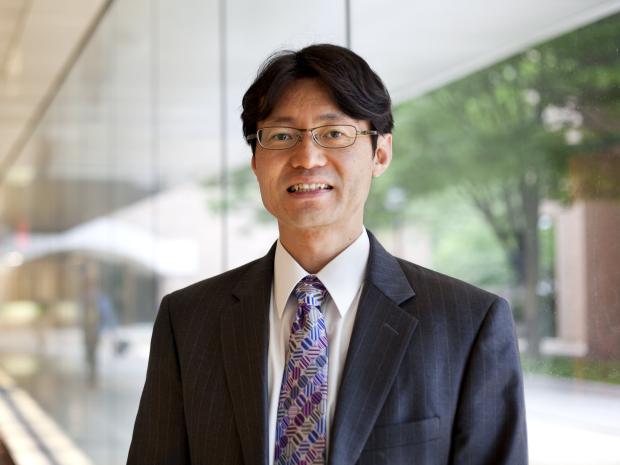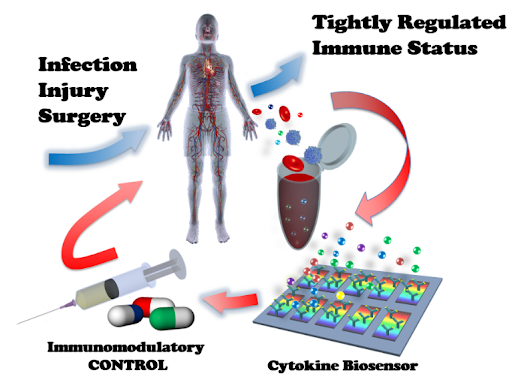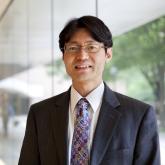Integrated Nanoplasmonic Biosensors for Critical Care Medicine

Speaker
Katsuo Kurabayashi, Ph.D.
Department of Mechanical and Aerospace Engineering
NYU Tandon School of Engineering
Abstract
Nanoparticle-based plasmonic biosensors are label-free, robust, rapid, cost-effective, and easy to integrate into miniaturized fluidic microsystems. These advantageous features make plasmonic biosensors promising candidates for point-of-care testing (POCT) of diseases. However, many of these sensors still fall short of satisfying both the speed and sensitivity required for timely diagnosing and intervening life-threatening critical illnesses resulting from severe infection, trauma, surgery, and immunotherapy side effects. This talk presents recent advances of miniaturized integrated nanomaterial-based biosensors enabling high-performance on-chip plasmonic optoelectronic assay of protein biomarkers by my research group and collaborators. The unique biosensing scheme used for the integrated biosensors device employs (i) biologically tuned nanoplasmonic light absorbance resonance shifts and (ii) high-responsivity, high-quantum efficiency photoelectronic conversion by two-dimensional atomically layered semiconducting transition metal dichalcogenide (TMDC) (e.g, MoS2) nanosheet channels. Using the biosensors, my group demonstrated multi-time-point monitoring of the profiles of circulating sepsis biomarkers in serum in a rapid (< 20 min), sensitive (< 50 fM), sample-sparing (< 10 μL) manner. The biosensors have recently been adapted for a homogeneous plasmonic colorimetric assay based on analyte-controlled plasmonic probe aggregation/assembly with a multilayer MoS2 channel. The near-infrared (NIR) operation of the biosensors at λ = 650 nm provides highly sensitive wash-free “mix-and-detection” quantification of a protein cancer biomarker, carcinoembryonic antigen (CEA), with an ultralow limit of detection (< 1 fM) and a 6-log linear dynamic detection range while suppressing the background optical interferences of unprocessed physiological fluids, such as human whole blood (WB), urine, and saliva. The biosensor technology has the potential to be translated into well-regulated immune therapy. Finally, this talk will discuss my future research directions along with single-molecule digital counting immunoassay sensor technology at NYU.

Bio
Katsuo Kurabayashi is a Professor and Chair of Mechanical and Aerospace Engineering at NYU Tandon School of Engineering. Prior to his appointment at NYU starting in June, 2023, he was a Professor of Mechanical Engineering and Electrical Engineering and Computer Science at the University of Michigan, Ann Arbor. He received a B.S. in Precision Engineering from the University of Tokyo, Japan, in 1992, and a M.S. and Ph.D. in Materials Science and Engineering from Stanford University, CA, in 1994 and 1998, respectively. His current research focuses on optofluidics, nanoplasmonic and biomolecular biosensing, and BioMEMS/microsystems for immunoassay, clinical diagnosis, single-cell study, and analytical chemistry. He has authored and co-authored 180 peer-reviewed papers and holds 13 U.S. patents. He received a 2001 NSF Early Faculty Career Development (CAREER) Award, and the Robert Caddell Memorial Award in 2005, the Pi Tau Sigma Outstanding Professor Award in 2007, the University of Michigan Mechanical Engineering Outstanding Achievement Award in 2013, the Ted Kennedy Award in 2015, and the Wise-Najafi Prize for Engineering Excellence in the Miniature World in 2019 from the College of Engineering at the University of Michigan. He is also a Fellow of the Royal Society of Chemistry (RSC) and the American Society of Mechanical Engineering (ASME).


